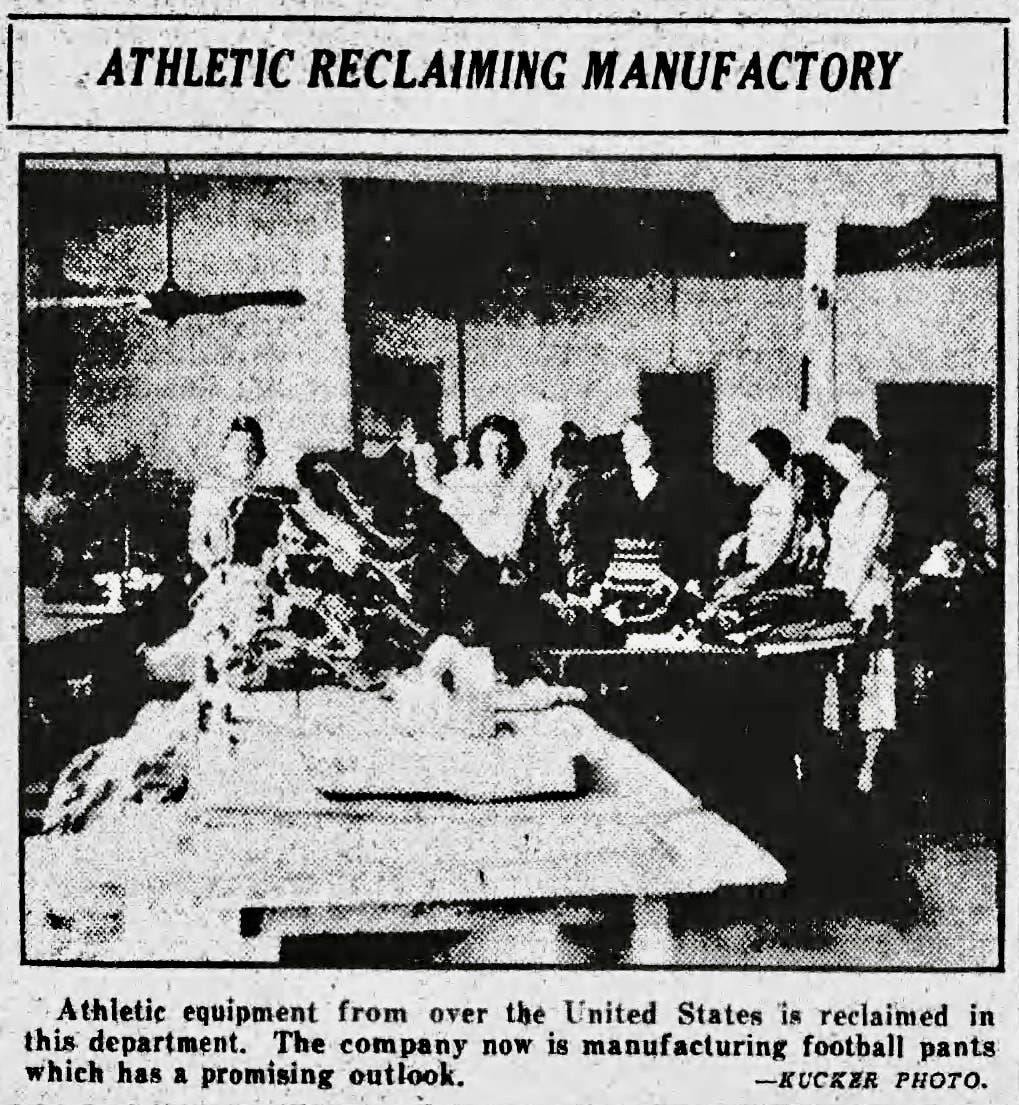Today's Tidbit... What's Old Is New Again: A History Of Football Equipment Reconditioning
Football equipment has been repaired and reconditioned for as long as the game has existed to save costs. All indications are that players, coaches, and managers handled the process themselves into the 1920s, while local seamstresses, cobblers, and harness makers handled work requiring particular expertise or equipment. Whoever did the job, however, appears to have done so locally.
That began to change in 1924 when Lloyd's Cleaners of Springfield, Missouri, which claimed to be the country's first athletic equipment repair shop, took on the task from a local college coach looking to offload the work. Within several years, Lloyd's annually handled 12,000 pairs of pants, 10,000 pairs of football shoes, helmets, shoulder pads, and assorted other gear for schools nationwide.

Other firms doing similar business popped up around the country, many of which were dry cleaners that cleaned uniforms, repairing tears as needed. However, since football pants of the era often had built-in pads and the jerseys had friction strips, the dry cleaners also became involved in refurbishing or replacing the pads. Helmets and shoulder pads became part of the business, and since they were largely made of leather, they were scrubbed, oiled, shellacked, and painted as needed. Likewise, school-owned football shoes were scrubbed and rebuilt with their leather cleats tacked to the soles.
The reconditioning industry remained a series of regional, family-run businesses for decades, though some firms grew substantially larger than others. Regardless of size, firms often handled the reconditioning process for teams ranging from youth to professional. Besides their cleaning services, many also reconditioned blocking dummies, blocking sled pads, goal post pads, and similar padding and helmets for hockey, lacrosse, and baseball teams.
Individual players or teams reclaimed the cleaning of uniforms over the years, while the shift from leather to plastic helmets and shoulder pads led to many reconditioning process changes. In addition, the legal environment drove most helmet manufacturers from the business, while adopting the National Operating Committee on Standards for Athletic Equipment (NOCSAE) in the 1970s spurred the standardization of services.
Whereas leather helmets were integrated units, plastic helmets had separate suspension, padding, bladder systems, and face masks, all disassembled, cleaned, buffed, or painted before reuniting by the reconditioner. Likewise, chemical baths, buffing machines, and paint booths replaced the manual processes used for leather helmets.

The NCAA adopted the NOCSAE standards in 1978, and the NFHS did so in 1980. The standards required reconditioners to acquire the testing equipment and become certified to perform the drop tests needed to recertify helmets.
Substantial industry consolidation occurred due to increased capital requirements and helmet manufacturers wanting to control their products throughout the lifecycle. Today, the National Athletic Equipment Reconditioners Association has only sixteen members, with Riddell holding two memberships and Schutt and Xenith having another. Being manufacturers and reconditioners allows them to service teams whether they need new or reconditioned helmets and provide other products and services.
Like many aspects of the game, what began as a simple, localized process handled by the craftspeople morphed into a controlled, science and engineering-oriented process that minimizes the safety risks associated with the game. Today, each manufacturer sets their helmets' recertification cycle, while NOCSAE bans recertifying ten or more years old helmets.
Football Archaeology is reader-supported. Click here to buy one of my books or otherwise support the site.


Different type of article. Nice change of pace.